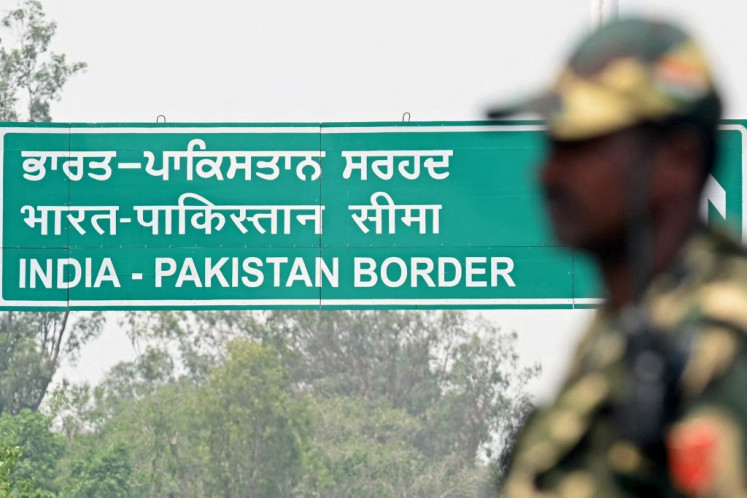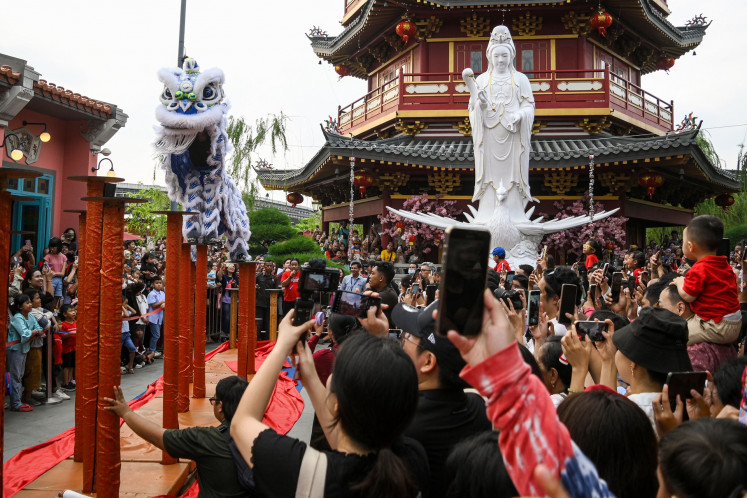Exports buoyed by emerging markets
Despite the global economic slowdown, Indonesia’s exports hit an all-time high last year with a total value of US$203
Change text size
Gift Premium Articles
to Anyone

D
espite the global economic slowdown, Indonesia’s exports hit an all-time high last year with a total value of US$203.2 billion, buoyed by surging demand from emerging economies, particularly China and India, according to data released by the Central Statistics Agency (BPS) on Wednesday.
The total value grew by 29.05 percent compared to 2010, with non-oil and gas exports contributing 79.57 percent with a value of $162.02 billion or a 24.88 percent jump from the previous year, according to the agency’s data.
Non-oil exports were still dominated by traditional commodities, such as minerals (mainly coal), vegetable oil (mainly palm oil) and rubber, worth $27.44 billion (16.94 percent share of total non-oil exports), $21.66 billion (13.37 percent) and $14.35 billion (8.86 percent), respectively.
Trade Minister Gita Wirjawan said on the same day that last year’s exports surpassed the official target of $200 billion thanks to significant rising demand from emerging economies, such as China and India.
“Throughout 2011, China was our main export destination with our exports topping $21.60 billion, up 53.36 percent from the previous year,“ he said, also citing India as another big export destination. Indonesia exported $13.28 billion worth of commodities and goods to India in the past year, a 34.80 percent rise from 2010.
The largest bulk of the country’s exports to China were natural commodities, such as coal, rubber, palm oil, nickel and aluminum, while the majority of its exports to India comprised of palm oil, coal and copper.
Stronger demands also came from other emerging economies, such as South Africa, Egypt and Russia, with the country’s exports jumping by 107 percent, 63 percent and 41 percent, respectively.
China, Japan and the US were still the top three export destinations of the country’s non-oil and gas products, settling at $21.60 billion (13.33 percent of overall exports), $18.33 billion (11.31 percent) and $15.69 billion (9.68 percent), respectively.
Gita said that 2011 imports rose by 30.69 percent to $177.30 billion year on year, mostly on the back of non-oil and gas imports, which reached $136.61 billion, up by 26.20 percent from the previous year.
Despite imports growing faster than exports, Indonesia’s trade balance still booked a surplus of $26.3 billion, a 19 percent increase from 2010.
On the import side, China remained Indonesia’s biggest source of imports, with total imports valuing at $12.05 billion (18.73 percent), followed by Japan with $8.66 billion (13.45 percent).
Last year’s imports were 73.80 percent, comprising raw materials and intermediary goods, which are deemed essential for the domestic manufacturing industry, up from 72.79 percent in 2010, followed by capital goods (18.65 percent) and consumption goods (7.55 percent).
Indonesia saw its trade deficit with China decline by 29.64 percent to $3.94 billion last year from $5.6 billion recorded in 2010, the year it implemented ASEAN-China free trade agreement.
Gita said that amid the gloomy global economic outlook, the government would maintain its target of exporting $230 billion worth this year, up 12.96 percent from last year’s figure, by continuing its market diversification push.
“This year we will keep exploring the African and South American markets,” Gita said.
The International Monetary Fund has recently cut its estimation for global economic growth to 3.3 percent for advanced economies and 5.4 percent for developing nations.
“This will become a source of worry for anybody who stakes a lot on exports,” he said.
The World Trade Organization (WTO) has also said that the overall volume of world trade would only rise by 3.8 percent this year. The exports of advanced economies would grow by 2.4 percent, lower than developing countries of 6.1 percent, according to its prediction.









